See all my photos tagged with .

I went to see a rubber farm. Natural rubber is formed by processing the juice of rubber trees. The tree is cut just deep enough to peel bark away, and a milky substance (latex) begins flowing.



The tree is normally cut at 11pm. It begins flowing into a small bowl that is gathered at 6am the following day.
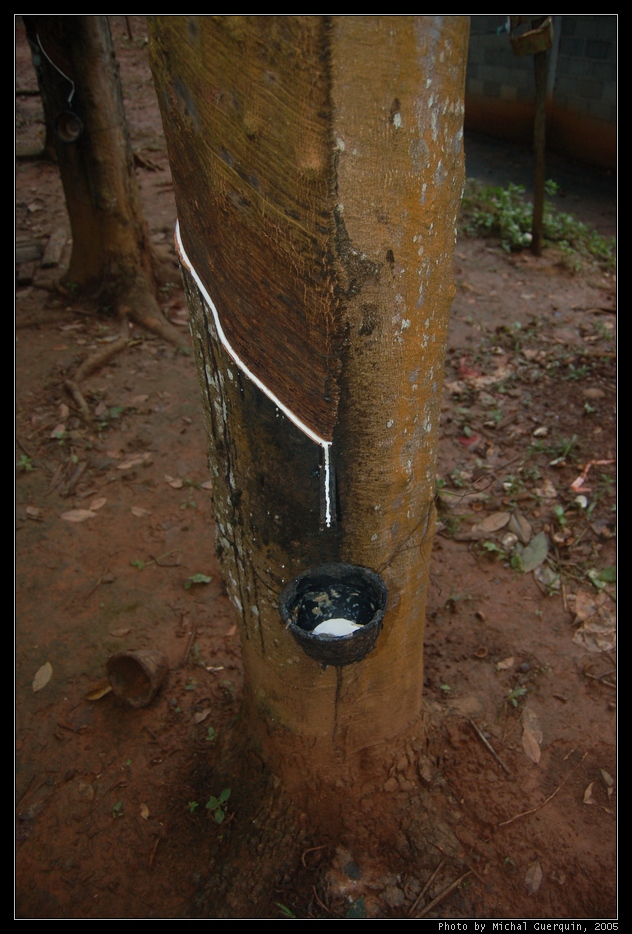
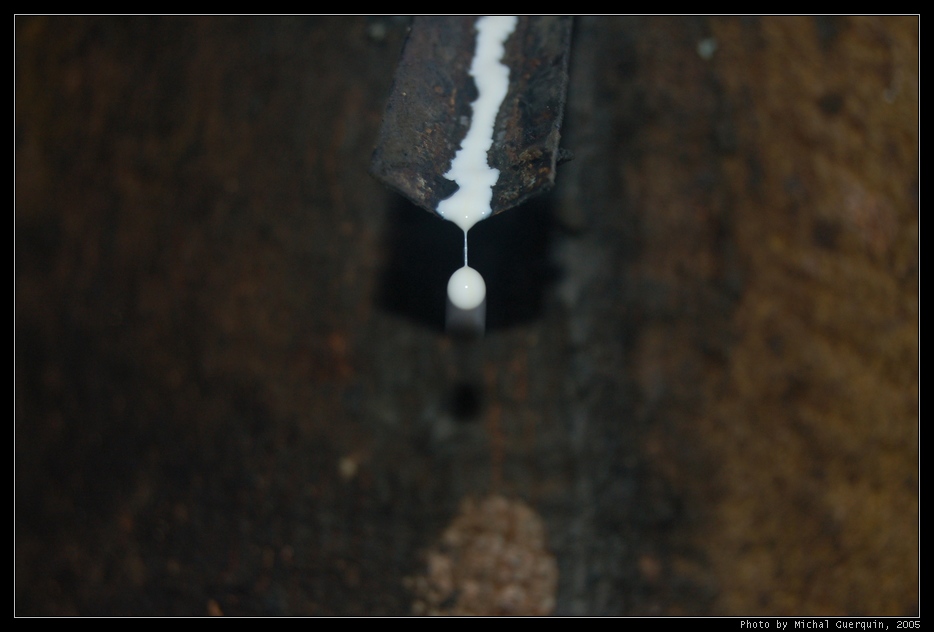
A farm may have 5,000 trees on it. The spacing of the trees is important so that an appropriate amount of sunlight can reach each tree. The slope of the land, for example, affects this spacing.
The contents of the bowls are collected and the latex is processed. Formic acid is used as a coagulant and a machine is used to create sheets of the rubber. About 25 bowls are used to form one sheet. Sulfuric acid is used to for improved elasticity in a process called vulcanization.
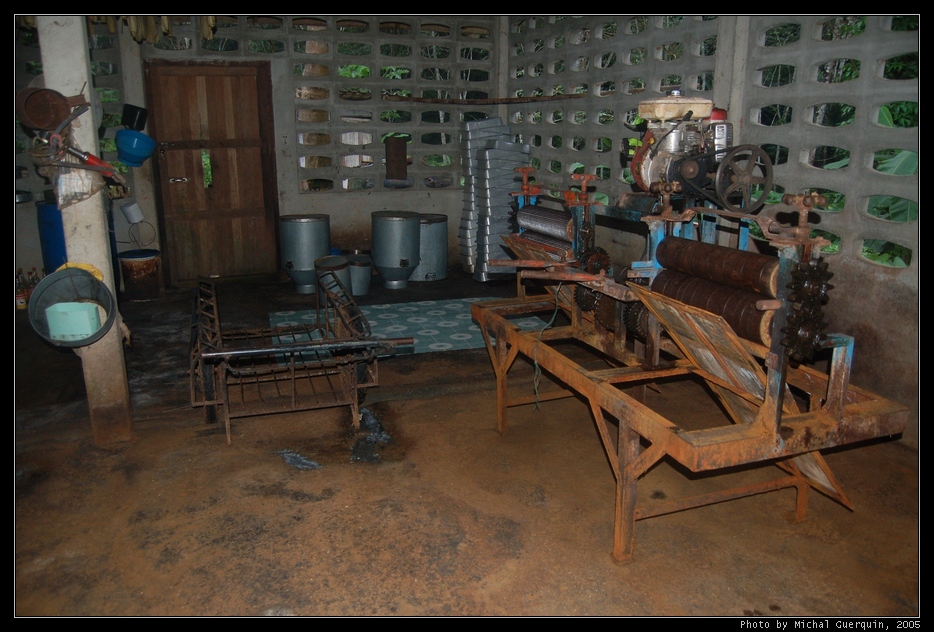

The sheets are then hung and dried.

Once dry, they are loaded onto a truck ...

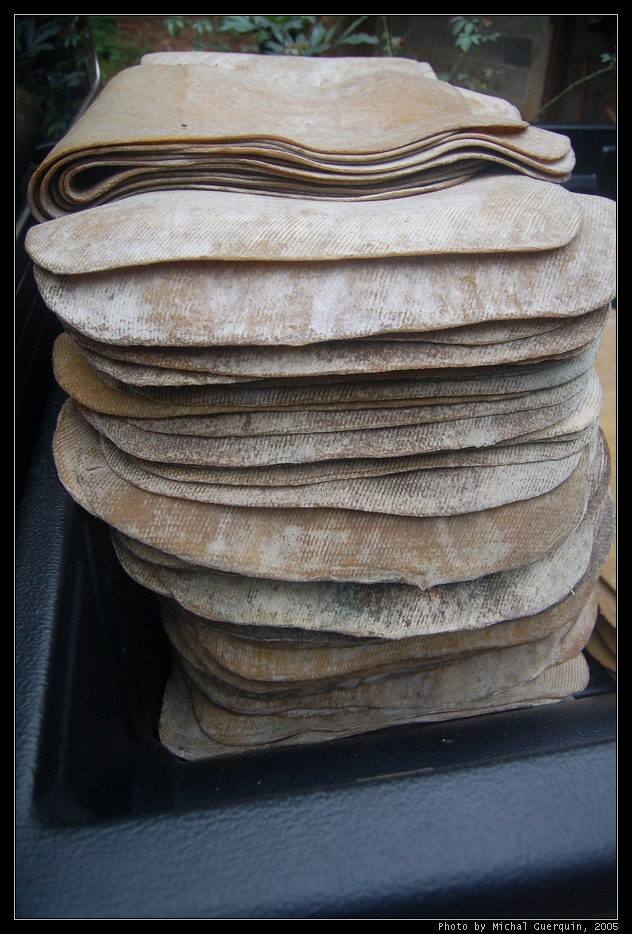
... and driven to a storage facility. This is where the rubber is weighed exchanged for money. The quality of the rubber is evaluated periodically for each farm and affects the price at which it can be sold.

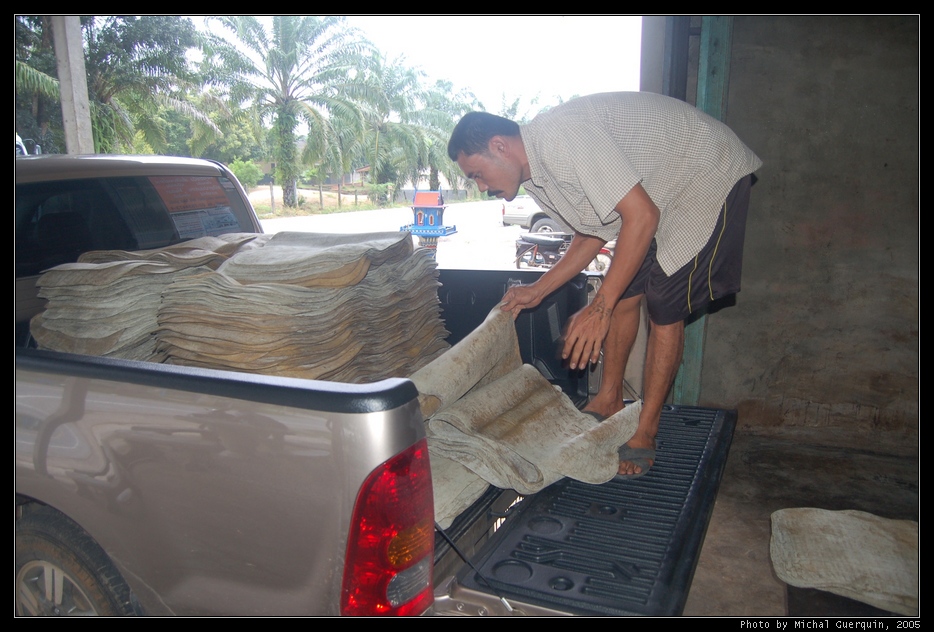
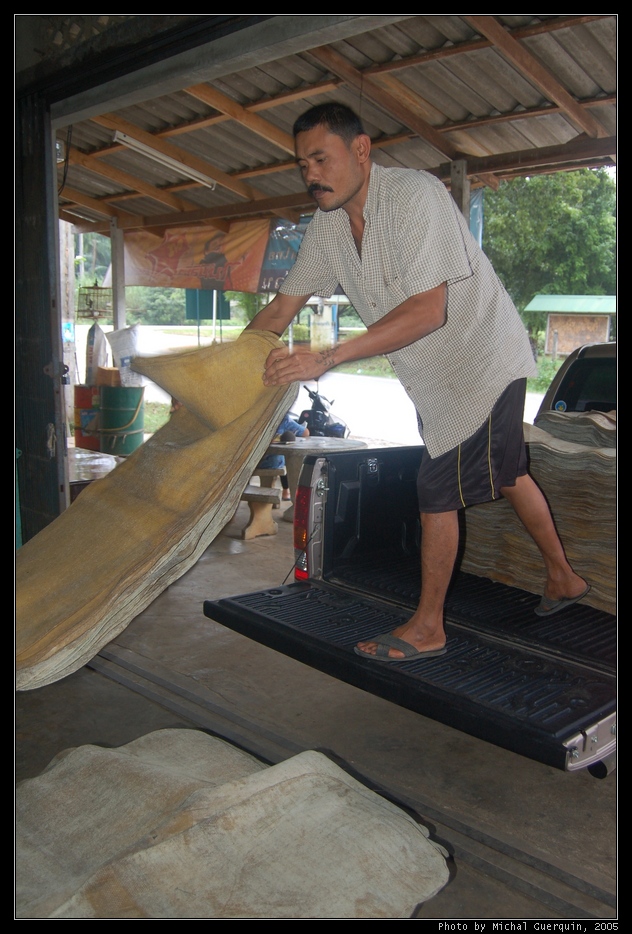

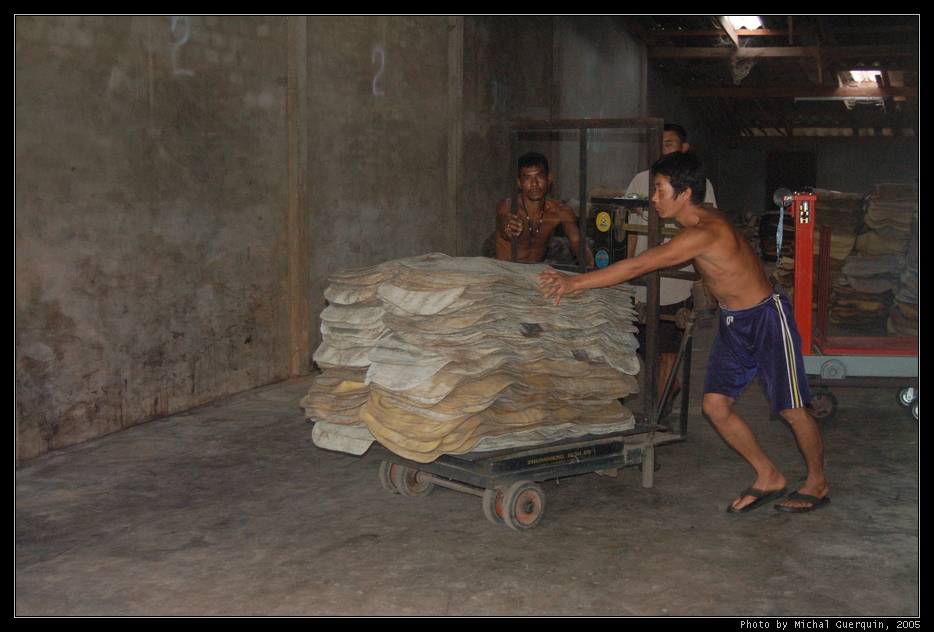
On the day I visited, the farm delivered only 300-400 sheets. This weighed about 480 kg. Usually, 1000 sheets are delivered. Some farms produce largeer amount of rubber.
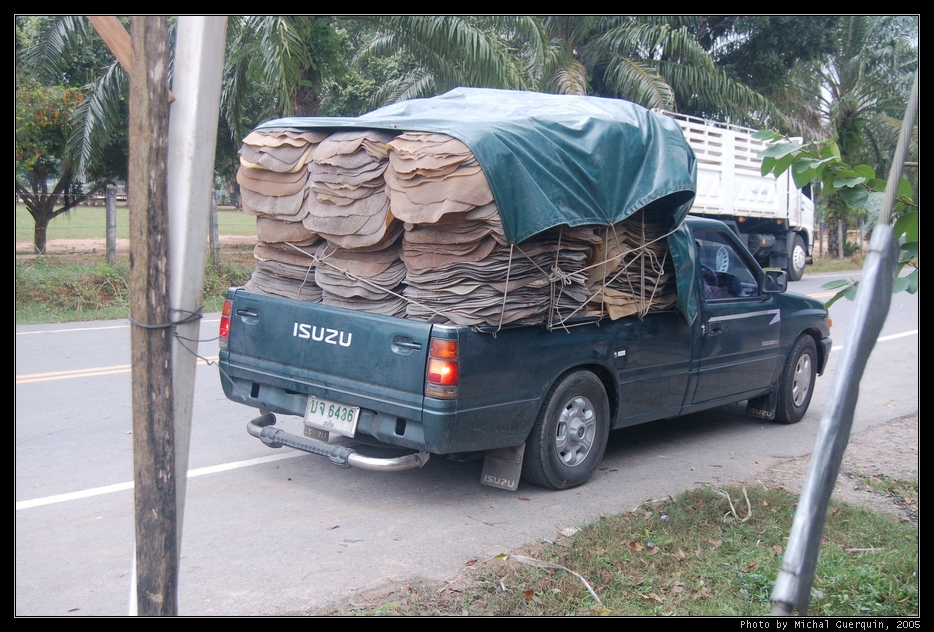
The weather plays a role in the production of rubber sheets. Moisture and wet seasons tend to pollute the bowls of latex and make them unusable for sheet production. These bowls can be sold too, but at a much lower price.
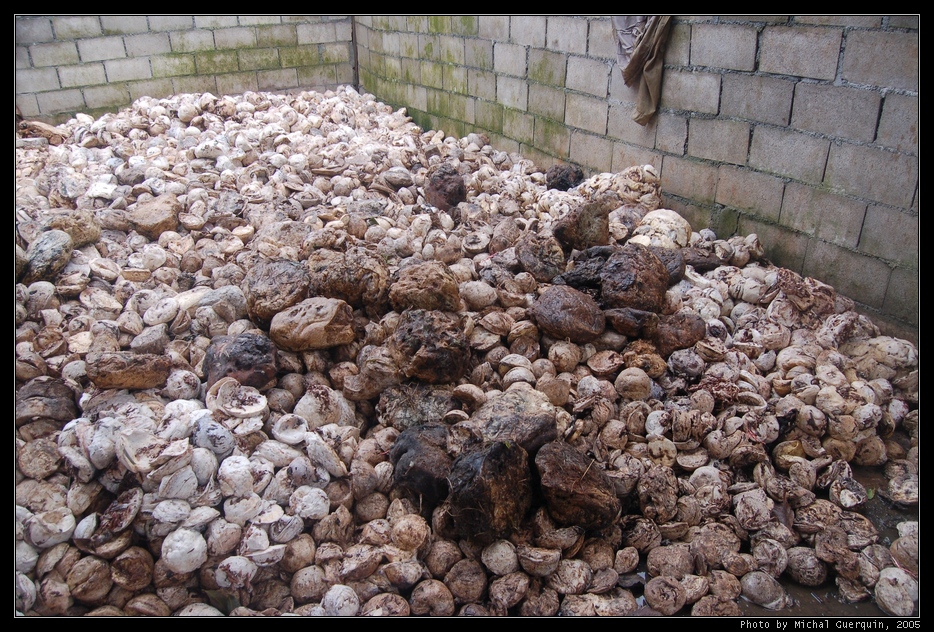
They look a bit like skulls in this photo, but they are soft latex and smell much like old milk.
https://michal.guerquin.com/photo/thailand/november2005/rubberfarm.html, updated 2006-04-05 00:55 EDT